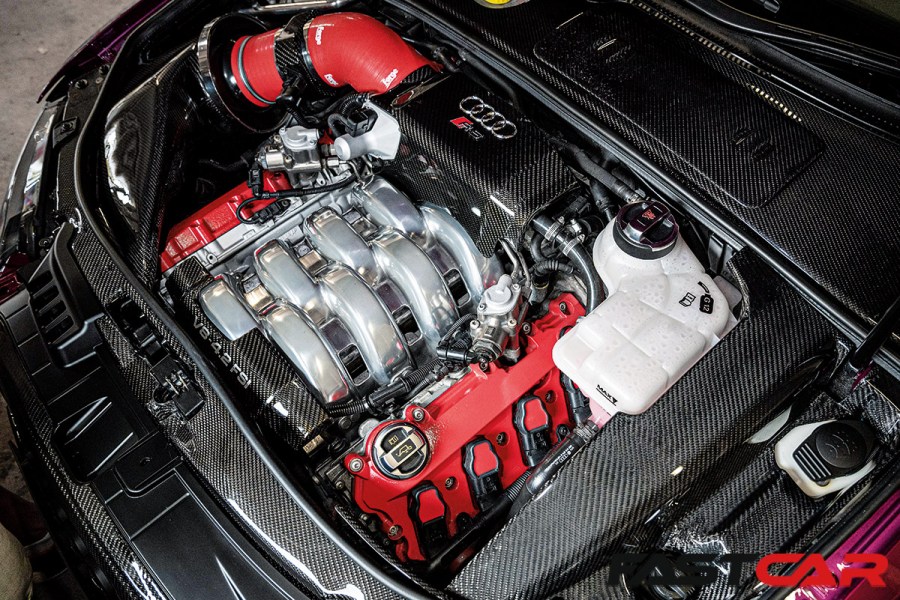Need more power from your engine? Whether you’re focusing on the ECU tuning or upgrading hardware, this is everything you need to know about car tuning, and how to tune an engine.
There’s no doubt that high-level car tuning can be a complicated business, but we’ll let you in on a little secret; there are quite a few ‘experts’ out there who love to make it even more baffling. Luckily though, we’re not here to blind you with science. Instead, we want to make it super simple. While you might start with some ECU tuning, you’ll undoubtedly end up on a path for more and more power. So, let’s get started, shall we?
What is car tuning?
The art of car tuning is to modify a vehicle to achieve greater performance. Put simply, it’s making your car faster.
It doesn’t matter if your engine runs on petrol or diesel, the basis of all car tuning comes down to one thing: air + fuel = power. The number one rule is that the more that you can cram in, the bigger the explosion in the cylinders and more power your engine will put out.
There are several ways that you can go about achieving this, whether it be by physically installing upgraded parts, or simply by meddling with car’s software through ECU tuning. Be aware that, the further down the rabbit hole you go, the more likely you are to need to think about strengthening the engine as well as just extracting more performance out of it. But fear not, we’ll touch on that too.
So, the basics are covered, we can begin to look at how exactly you do the job, showing you the fundamentals needed to dip your toe into the world of basic car tuning. There are also a good few links for further reading when you’re thinking of going wild.
How to tune a car
Below, we’ve highlighted some the key areas you should focus on modifying when you tune a car. Some are a little more extreme than most would aim for, but whether you’re looking for mild performance gains or huge ones, we’ve got you covered.
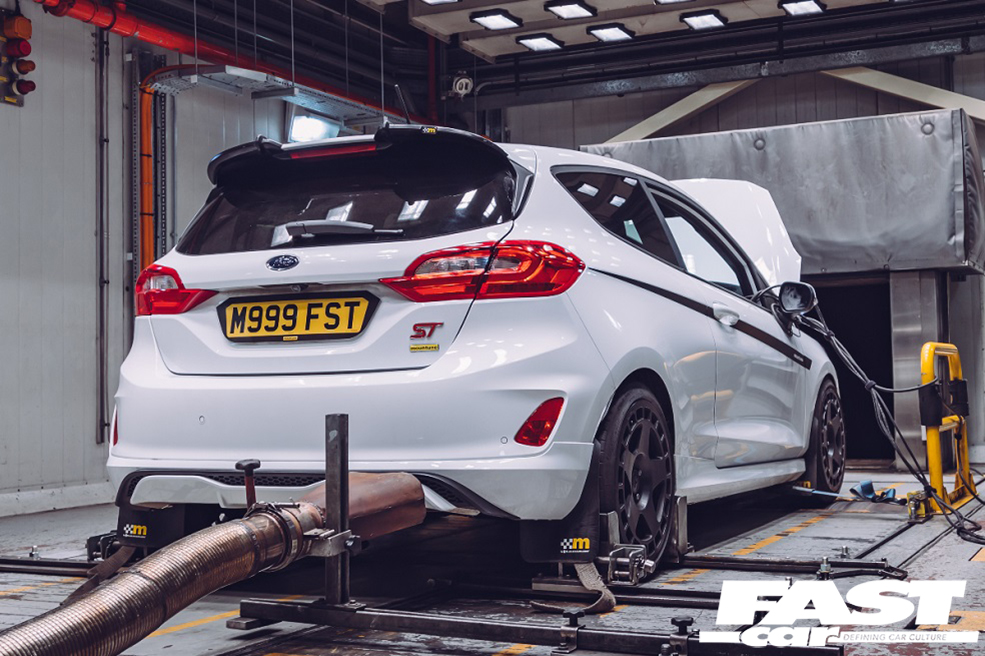
How to tune a car through ECU Tuning
The easiest way to make more power, especially forced induction cars, is a remap. It wouldn’t be a guide on how to tune a car without mentioning ECU remapping. Mapping is the only way to optimize engine settings such as fueling, ignition timing and boost. Standard ECU software – otherwise known as the engine map – is written by the car manufacturer to safeguard the engine through all sorts of extreme conditions. While it’s all very comforting to know that your motor will still run halfway up a mountain or dodging penguins in the Artic, most of us will never experience these high altitudes or extreme temperatures. Tweaking the software to optimize the settings for real-world conditions, while staying in safe parameters for the engine, is an easy route to more power.
Although remapping can yield huge increases of up to 40% on an otherwise standard car, the key thing here is that it’s by far the best way of making the most of any other bolt-on tuning mods. In some cases, it’s the only way to see the desired result from another upgrade.
The truth is that your settings can only be adjusted so far by the standard sensors and the ECU software, so your car may not be fully optimized for all the extra airflow from that huge air filter, big turbo or free-flowing exhaust. A quick fiddle with your software will change all that.
It’s always a symbiotic relationship with the other hardware, though. If you’re bunging in loads of air, the software can only match it with as much fuel as the standard injectors can physically deliver. Equally you don’t want to overdo the fueling without enough airflow. In this respect software tuning is all about balance. To get the full picture, see our ECU Remapping Guide.
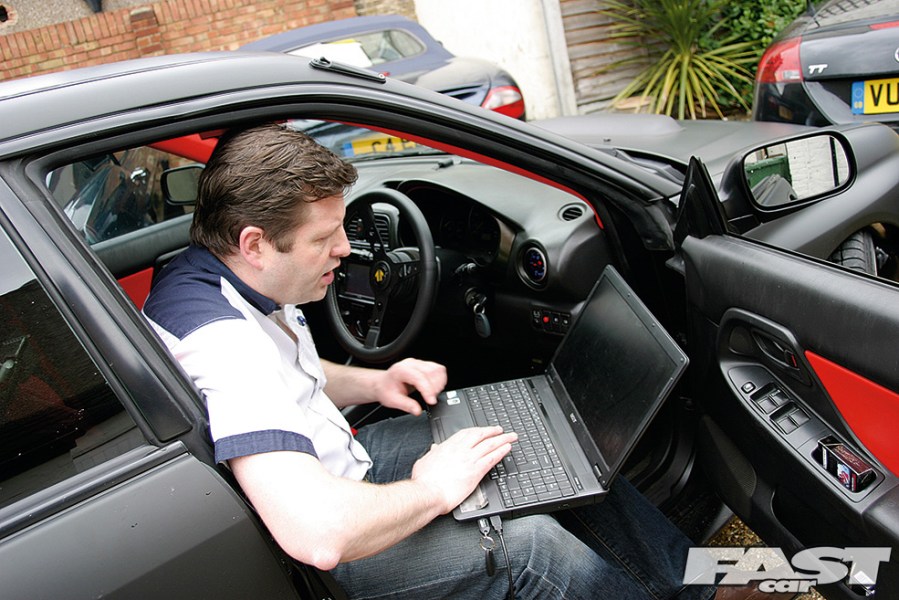
What is stage 1 ECU tuning?
We’re not sure who first coined stages of car tuning, but for one reason or another, it’s a phrase that’s now used universally. A stage 1 tuning is simply an ECU remap. A tuner adjusts the ECU’s parameters, namely the timing, air/fuel mixture, injectors, and on forced induction vehicles, the boost pressure, all in favor of performance. Stage 1 tuning is very effective on vehicles utilizing forced induction, as the increase in boost pressure is a surefire way of improving performance. In some case, this can be as much as 40% more power. Why? Manufacturers build cars that balance performance, reliability, emissions and economy. Therefore, you can usually tweak the engine’s settings for more power, but this could be at the expense of reliability, emissions and economy.
What is stage 2 ECU tuning?
A stage 1 tune is usually very mild, and in most cases, should be safe for your engine and other hardware components. However, it is always worth considering upgrading other hardware components, like those mentioned in this article, in order to increase reliability. A cool, breathable engine is a happy engine, so your first port of call after a stage 1 tune should be to improve airflow and cooling. Once you’ve added components such as an intercooler, air intake and exhaust system, you’ll be ready for a stage 2 tune. This is a slightly more aggressive ECU remap, that will start to test the limits of other, very expensive parts, including your engine’s internals, turbo, and transmission.
At this stage, you’ll need to start considering upgrading parts of the engine’s internals, think pistons and conrods. The gearbox might also be at its limits. If it’s an semi-auto box, uprated clutch packs are in order. If it’s a manual, you’ll certainly be needing an upgrades clutch and flywheel. You can read more about engine strengthening further down.
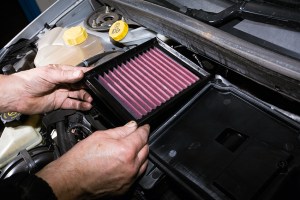
Performance air filters
Increasing airflow allows your car to burn more fuel. So, that’s where we’re heading next in our guide on how to tune a car.
Every modern car has an airflow sensor that monitors the amount of air entering the engine, this helps the ECU work out the optimum air:fuel mix. When the volume of air increases, the sensor tells the ECU to bung in more fuel and you get more grunt.
The easiest way to increase flow is to fit a performance air filter. These come in all shapes and sizes, but what they all have in common is that they’re designed to allow a larger volume of air to pass through, while still filtering out any harmful particulates.
In most cases, a paper filter sits inside the factory airbox. This is great for filtration, but not for airflow. Performance filters are washable and designed for long term use, but the real magic is in the materials used for the filtration element. These reduce a huge amount of the restriction, allowing your engine to suck in more air. There are various types of filter available. From performance panel filters which slot into the standard housing, to induction kits designed to not only free up the restriction caused by the airbox itself, but to incorporate oversized cone filters with a lager surface area to flow even more air.
Different filter systems will yield different results. You’ll have to weigh up the gains and how much you’d like to spend. That said, there’s a system for every budget, making a filter swap one of the all-time great basic car tuning mods. Check out our full Performance Air Filter Guide to help you find yours. We’ve also got a good to the best car air filters, check it out!
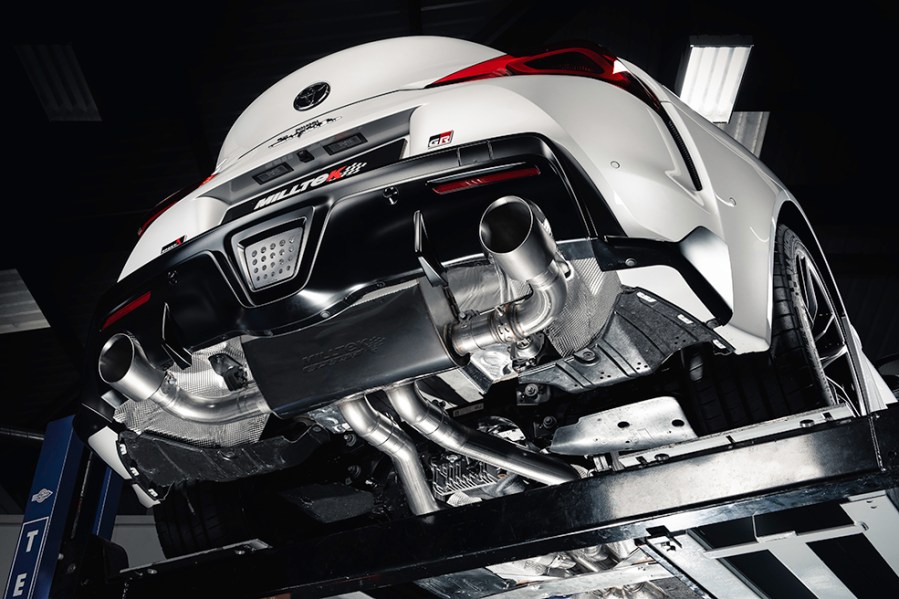
Performance exhausts
Next up on our car tuning guide is an obvious one, performance exhausts. If your induction setup controls how effectively your engine can breathe in, your exhaust takes care of the breathing out. Exhaust systems are there to get the waste gasses out of the cylinders. In performance terms, the more efficiently you can do this, the quicker the engine can get back to burning the good stuff, effectively making you more power. Just like a performance filter, a performance exhaust is all about eliminating restrictions. This is why they’re designed to be as free-flowing as possible, while remaining within the realms of practicality.
In an ideal world you’d have an arrow-straight pipe or hardly any exhaust, but that’s rarely possible. First your system needs to follow a particular route to the back of the car, and it’s almost never a straight line. Second, having no restrictions at all (none of the silencers, resonators and backboxes) would make your exhaust uncomfortably loud.
Designing a performance exhaust is a feat of engineering designed to optimize gas flow without making the car undrivable. Manufacturers will look to cut down on restrictions through clever tweaks such as smoothing out the bends, using a larger diameter pipe and fitting smaller, less-restrictive silencers and backboxes.
Big vs small diameter pipes
To tune a car, all you need is a whacking great exhaust then? Well, no. There’s more science to it. Turbocharged cars love the most free-flowing exhaust possible, while N/A engines can actually benefit from a little scavenging in a smaller pipe. There’s also the fact that a ‘full-system’ goes far beyond the bit at the back; there are downpipes, manifolds and different types of backbox to consider, too. For the full lowdown take a peek at our Guide To Exhausts. For the best manufacturers, check out our guide to the best exhausts in 2023.
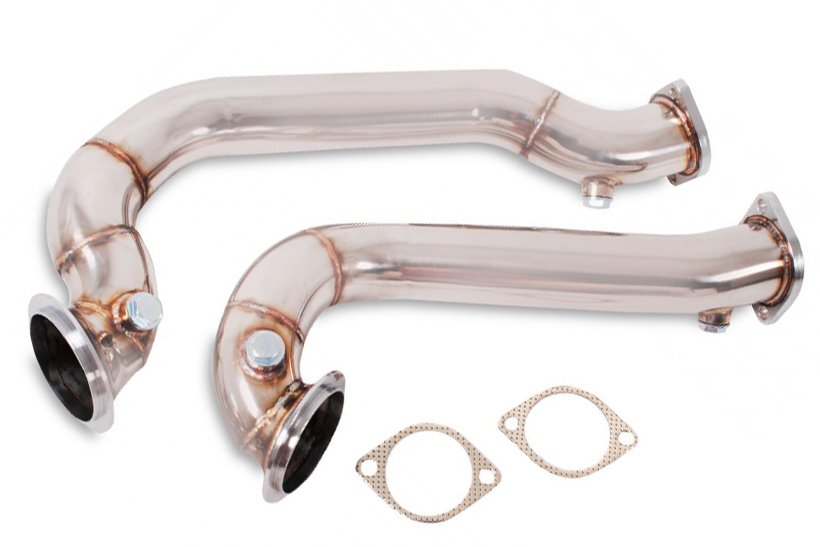
Emission control systems
Forget those cheeky German manufacturers fiddling their CO2 figures, here we’re talking about the emission control devices that have always had the biggest impact on engine tuning. Again, we’re looking at standard parts that cause restrictions, and typically the biggest cause of backpressure in your exhaust system will be the device used by the car maker to keep the emissions down.
In the US, all petrol cars since 1975 has needed a catalytic convertor to meet federally mandated emissions standards. In the UK, all petrol cars registered after 1993 must feature a catalytic converter to pass an MOT emissions test. And, since 2018, all diesel cars must have a working diesel particulate filter. A catalyst works by promoting a chemical reaction to turn noxious gases into CO2, while a DPF is basically a filter that catches and burns off the soot kicked out by a diesel engine.
While the way they work differs, cats and DPFs ultimately create a barrier to optimum gas flow. So, assuming you’d actually like to drive on the street, that’s where high-flow replacements come in.
De-cats and sports cats
As with other performance exhaust parts, the idea is to offer an upgrade that lets gas flow through more quickly. The only real difference is that these free-flowing options still have to do the same job of keeping emissions to an acceptable, not to mention legal, level.
The good news is that nowadays performance (or sports) cats are widely available. Many offer direct, bolt-on fitment, making them the ultimate mod to complement any performance exhaust system. High-flow DPFs are a little less common, and often come in the form of universal items designed to be welded into a custom system, again these can be extremely effective and offer up to 50% better flow over standard.
Be sure to check out our more in-depth guide to exhaust downpipes, sports cats and de-cats.
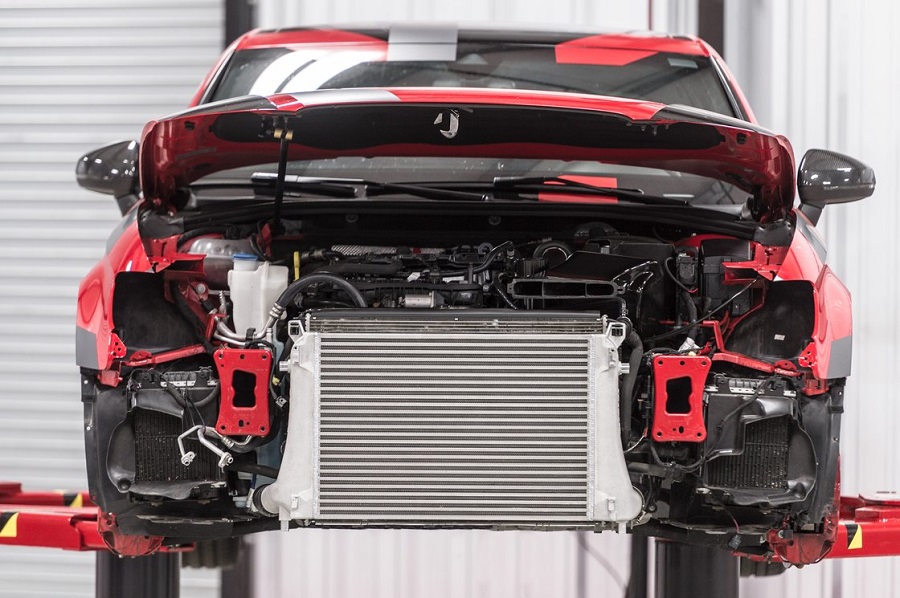
Cooling
Keeping your temperatures down and drawing in colder air is imperative when looking at how to tune a car. Cold air is denser than warm air – it contains more oxygen by volume – and, as you already know, more oxygen means more fuel can be burned. In fact, sucking in a load of warm air can lose you power. It can also lead to engine failure through pre-ignition, otherwise known as pinging or engine knock.
There’s two distinct ways of getting denser air into your engine. The simplest is by picking up the coldest air possible in the first place. Nowadays there’s plenty of well-designed induction kits that will position the air filter strategically in the front bumper or grille for maximum airflow.
Intercoolers
The second way is physically cooling the air with an intercooler, which is basically a radiator for the air charge passing through it. Aside from extreme motorsport applications, intercoolers are reserved for turbocharged vehicles.
Turbos get hot because they spool off the exhaust gasses and this means that, almost inevitably, the compressed air they’re pushing into the engine will soak up some heat on the way through. Car manufacturers will fit an intercooler in-between the turbo and the engine as a simple safety (anti-pre-ignition) device. The good news is that there’s various intercooler upgrades that offer better cooling to make the air even denser, this increases power and reliability at the same time.
Switching to a direct-fit alloy replacement will dissipate heat more effectively. Then there may be the option to upgrade to a larger capacity intercooler. In many performance applications, you’ll find that opting for a front mounted intercooler (FMIC) can see more gains. For more information, and other handy hints for keeping temperatures down, check out our guide to keeping your car cool. We’ve also got a guide to both intercoolers and radiators to help you understand how they operate.
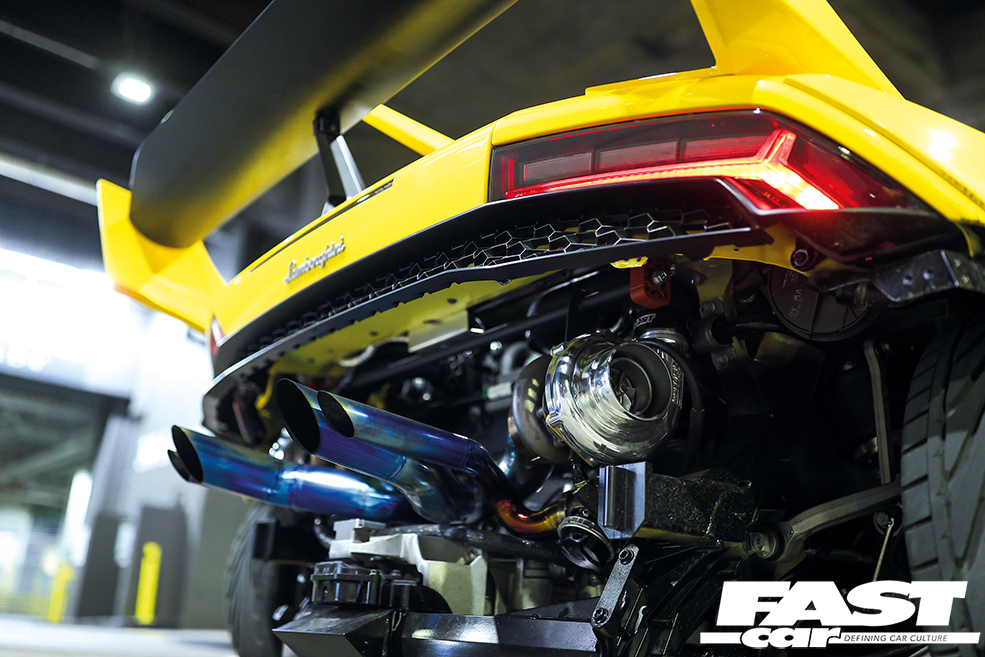
Forced induction car tuning
Forced induction is exactly what it says on the tin, the use of an air compressor to create boost and force it into the cylinders. This boost (or, technically speaking, compressed air delivered at more than atmospheric pressure) has more oxygen by volume, and guess what? That’s right; it allows you to burn more fuel. If you’re looking at how to tune a car for ultimate power, this is an important step.
Superchargers and turbos essentially do the same job, only in different ways. A turbocharger uses the exhaust gasses to spin a turbine on one side, sucking in fresh air on the other, while a supercharger is driven directly off the engine. Turbos are far more common, but the tuning principle is always the same. Modifying your standard item with uprated internals for more airflow, or simply replacing it for one with a larger capacity, will inherently give you the potential for more power.
There are a couple of downsides. Strapping on a large turbo will always create a certain amount of lag – a delay between pressing the throttle and getting full boost – because the larger the turbo, the longer it will take to spool up. So, you need to find a balance between outright power and drivability. While superchargers create no lag, there’s no denying that they can be a little brutal on the wallet.
There’s also the question of conversions – bolting on a forced induction system to an engine that doesn’t have one from the factory. This has been extremely successful for many a tuner over the years but, it does require more consideration when it comes to supporting mods. For the answers to all your questions about blowers and those magical metal snails, check out our full guides to Turbochargers and Superchargers.
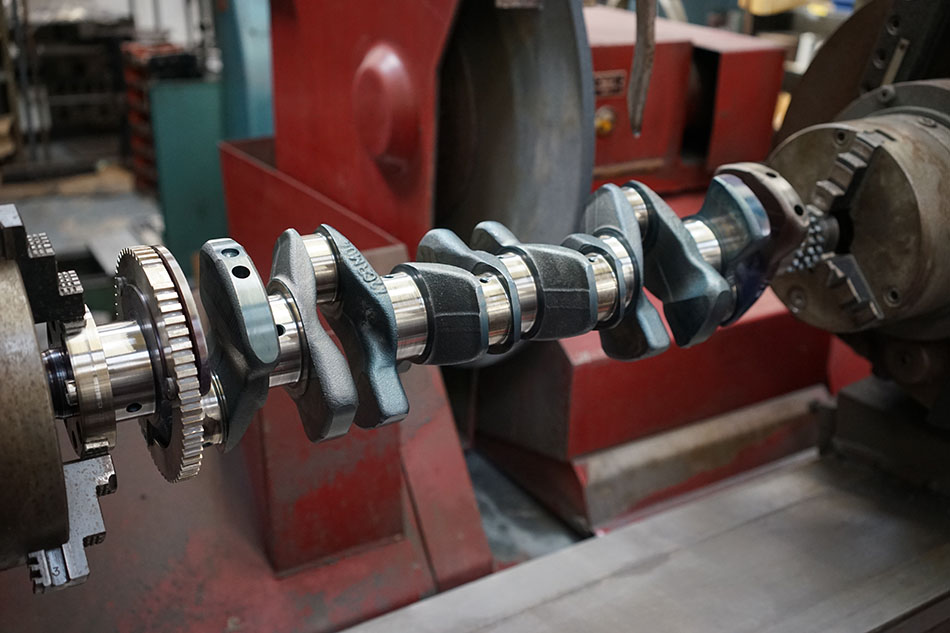
Camshafts and other engine internals
Talking about camshafts may be a bit of a wildcard here but, swapping out your cams for performance items can still be useful, particularly for squeezing more power out of N/A engines. Therefore, we’ll conclude our guide on how to tune a car here.
All you really need to know about these is that they have the job of opening the valves which let the air/fuel charge into the cylinders and the exhaust gasses out. When it comes to power tuning, the further you can ‘lift’ the valves, and leave them open over a longer ‘duration’, the more charge/gas you can let past. Performance camshafts do this by utilizing specially engineered cams, making them a powerful tool in the tuning arsenal. For more info on performance cams, check out our full Camshaft Guide.
As for the other engine internals – forged pistons, crankshafts, conrods and the like – uprated items are the only route to strengthening the engine enough to stand up to other influences, such as huge amounts of boost or driving that’s on the fruiter side. But, reliability aside, choosing the right internals can also have a huge impact on tuning. Stroker kits for example, contain pistons, rods and a crank designed to increase the cylinder capacity without having to physically bore out the block and fit larger pistons. OK, it’s not exactly one for beginners, but transforming your 2-litre motor into a 2.4 is always going to raise an eyebrow or two. Check out our Strengthening Engine Internals Guide for everything you ever needed to know.
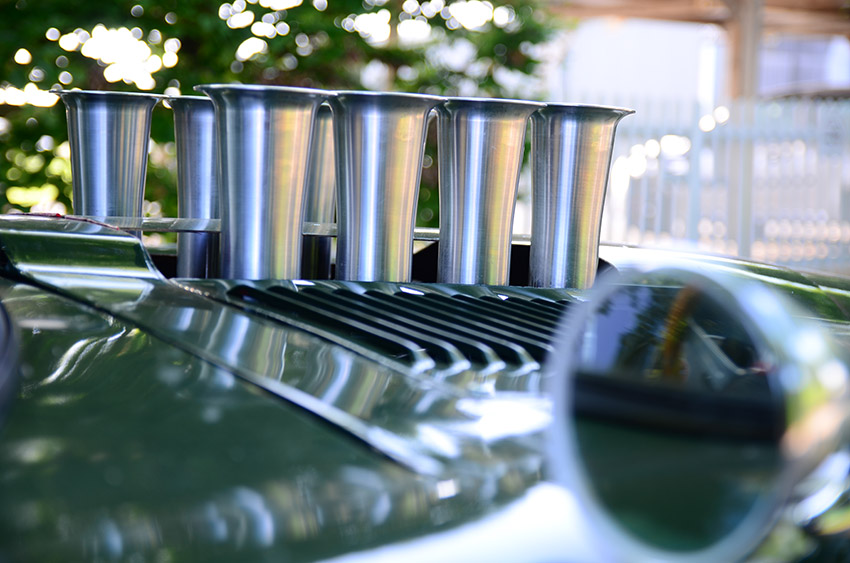
Tuning a car with independent throttle bodies
Next up on our guide to how to tune a car are independent throttle bodies. These are far from basic, or cheap for that matter, but they get an honorable mention because ITBs are one of the ultimate induction mods. What these little puppies do is replace everything from the airbox right up to the cylinder head – the filter, the intake manifold, the lot. Perhaps most importantly they also replace the standard single throttle body – the part that controls the air entering the inlet – with a separate throttle body for each cylinder.
With a massive volume of air directed straight into the cylinders, as you can imagine, there’s not much in the way of restrictions, and because you don’t have to wait for air to fill an entire induction system before it gets into the engine, you also get instant throttle response.
In most cases aftermarket ITB setups are used to tune N/A engines, although there are some out there who have been known to turbocharge them, too. So, if your intake kit isn’t quite cutting the ketchup, check out our Throttle Bodies Guide… and then start saving! You’ll also need some ECU tuning for the engine to work in harmony.
Car tuning FAQs
Now we’ve covered off each area of the car you can tune to get more power, you’ve likely got some questions. We’ve put together some frequently asked questions below to help you along your car tuning journey.
Can you tune a car yourself?
The short answer is yes. While some of the work above will need to be carried out by specialists, some you can fit on your driveway at home. For example, things like exhausts and air filters or intakes are relatively easy items to install. If you’ve got access to a set of jack stands to keep the car off the ground, then you should have no issue fitting them.
The more complicated areas come with ECU tuning and other engine work. While some do decide to map cars themselves, this involves far more experience and knowledge. Adjusting air fuel mixtures, ignition timing and more can be detrimental to your engine should you do it wrong. Upping boost pressures may seem like a great idea, however, if your turbo or other components are not strong enough to withstand the extra pressure, it’ll be a very expensive repair bill. We would advise leaving this to a reputable tuner, someone who has experience with your type of vehicle and engine, and also has good reviews from other customers. This is not an area you want to play about with. Trust us, we’ve blown up enough engines over the years by pushing things too far!
If you do want to tune a car yourself, there are a number of different pieces of equipment you will need. Not least, you’ll need to know whether your car’s ECU has the capability to be tuned. You can find out more by visiting our guide to ECU remapping.
How much does it cost to tune a car?
This is a bit of an open-ended question, as it all depends on how far you want to take things. If you’re looking for a sensible remap to unlock a few more horsepower, remaps can start from $/£300 and travel right up to $/£800 or more depending on your car and level of tune. If you want more power, you’ll likely have to start looking at other hardware upgrades. Be sure to check out the list above for information on those areas, but for now, those will be cooling (air filter/intake and intercooler), exhaust systems (including sports cat/decat), spark plugs, fuel pressure pump and more. At this level, you’re looking at anything from $/£2000 upwards, plus the cost of another remap to reap the rewards of those upgrades.
For big engine builds, forged internals, bigger turbos etc., you’ll be looking at $/£10,000 up to any amount you want. The fully forged engines and transmission that Underground Racing build with over 2000hp in Lamborghinis cost in the hundred of thousands of dollars. There isn’t an upper limit here, just how deep your pockets are and how far you’re willing to go.
Can you tune any car?
Technically speaking, yes. The question you should be asking yourself is should you? Some cars lean themselves more towards tuning. Think your Japanese performance cars, muscle cars, or pretty much any fast saloon, sports car or hot hatch.
Should you tune your 1.0-liter-engined car? How much power do you want from it? We wouldn’t deny anyone the pleasure of modifying their car, we’ve built our business around showcasing the very best of car modifications across the globe. But, pouring a heap load of cash into a humdrum car is likely going to end with you having spent far too much money getting a limited amount of extra power.
Be smart. If you’ve got a 3.0-liter turbocharged BMW then sure, a remap is likely going to unlock a lot of extra power. And further upgrades could see that figure jump quickly. In a base VW Polo, you aren’t going to see great results unless you start opening the engine up and completely rebuilding it with stronger parts, a different fuel system and more. At a cost which you could have used to buy a better base car to begin with.
Are there downsides to car tuning?
Like anything in life, if it all seems too good to be true, it likely is. What people don’t tell you about car tuning is that the further you go with improving power, the likelihood of you hitting problems increases. In the pursuit of performance, there will always be a limiting factor along the way. Perhaps the pistons aren’t strong enough to deal with increased boost pressure, perhaps the transmission isn’t capable of more torque. You may need to increase the diameter of your exhaust further. There are a heap of parts that need consideration when car tuning to ensure you don’t blow your engine up. Do you research and speak to car tuners.
Another downside, and one that we see a lot of people falsely saying online, is that “a remap will improve fuel economy and performance”. No. You either have one or the other. If you do see improved fuel economy, it’s likely because there was an issue previously that was causing more fuel to be burnt. Manufacturers tune cars to meet a number of different regulations, so it becomes a balance between economy, emissions, performance and reliability. If you tune for more performance, the others have to give slightly. That’s not to say that a remap would now make your car unreliable, or suddenly terrible on fuel, but it does put more stress on engine components nonetheless. Plus, the basic principle of more power is more air fuel mixture. Kind of a given you’ll use more fuel once tuned!
Is car insurance affected by tuned or modified cars?
In short, yes. It’s likely that any non-standard part you fit to you car is going to affect your car insurance premium. This is sometimes as simple as an admin fee to add the modifications to your policy, or it’s going to affect the whole premium price. It all depends on the modifications. Things like brakes and suspension have less of an impact on cost as say increasing the overall power output of your car. This is presuming that the brakes and suspension modifications are legal, of course. The one thing I’d like to reiterate here is that there are a number of factors at play, and we couldn’t possibly answer each scenario. But where you live in the world, what car you drive and what level of modifications you have done can all vastly change your insurance costs.
A car that produced 280bhp at factory that now has forged engine internals, bigger turbos and more that now produces something like 500-600bhp is going to impact the cost most significantly. In fact, you’ll find that a lot of insurers simply won’t bother quoting you at all. You’ll likely have to go to a specialist insurer in that field in order to get a sensible quote. For less impactful modifications, you’ll find a broader number of options at less cost. But it’s a case by case basis, a 21 year old insuring a modified BMW M3 is going to pay a whole lot more than a 47 year old with a clean license insuring the same modified M3…

